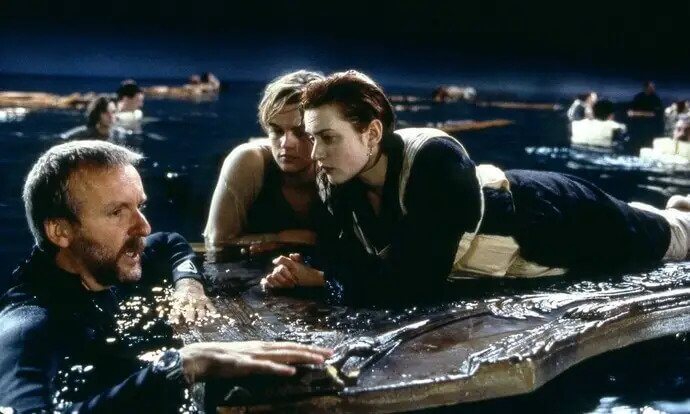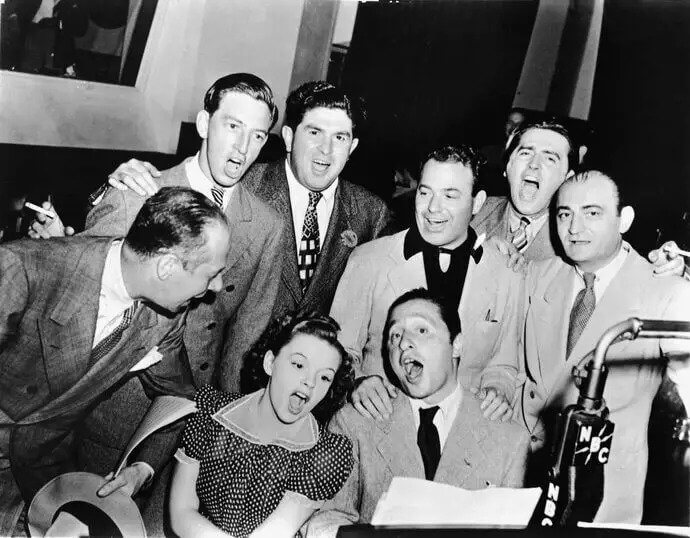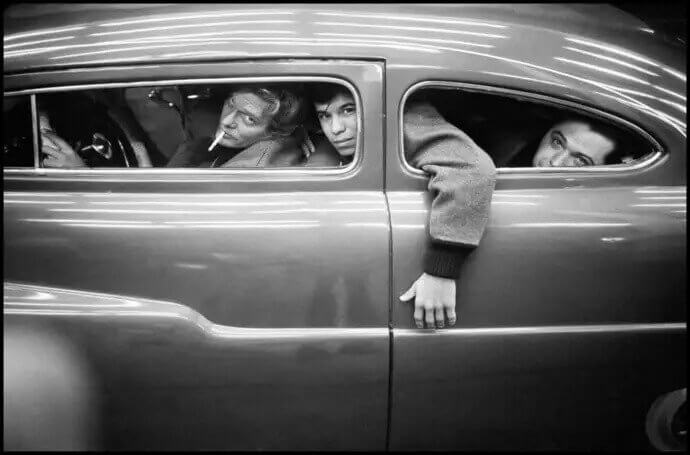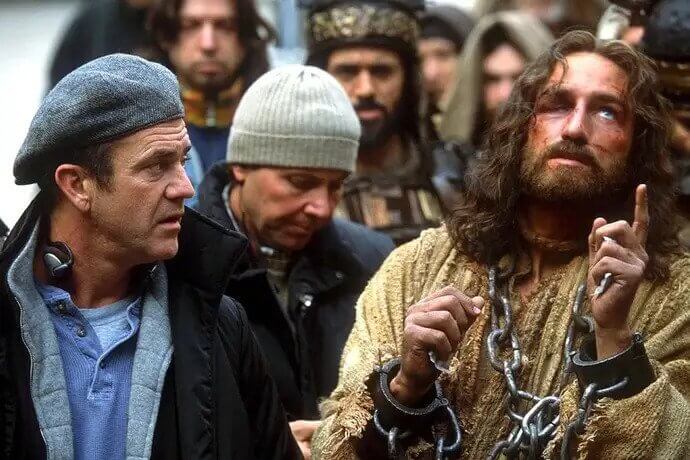Top-notch scenes in Blockbuster make us go gaga. They deliver unreal footage that actually floats our boat. However, behind every epic scene in a film lies an intricate process of production that is often overlooked. From pre-production planning to post-production editing, there are countless steps involved in bringing a film to life - and mistakes can happen at any point along the way. In fact, discussing the mistakes in film production can offer a fascinating glimpse into the art and craft of filmmaking.
In this post, we want to shed light on the often-overlooked mistakes and challenges that arise during film production. To illustrate our point, we'll take a closer look at 10 great Movies with unbelievably terrible production stories - from Titanic, which sent 50 crew members to the hospital, to Fitzcarraldo, which tragically resulted in deaths on set. While these films may be beloved by audiences today, the behind-the-scenes stories of their creation offer a sobering reminder of the risks and complexities involved in filmmaking. Film Production Went Wrong all the time.
#1 Titanic (1997)

Many cast and crew members became ill after being soaked in the frigid water for an extended period of time—water that Cameron himself flooded the sets with. When Kate Winslet exhales as she enters the sea in the film? That's a real gasp. The water was stark freezing.
Separately, 50 crew members ultimately ended up in the hospital when the catering service for the product delivered bowls of chowder that were laced with PCP, a hallucinogenic narcotic. In an effort to get the film made, Cameron argued with studio executives despite the fact that production ran 138 days over schedule and over budget.
At the time, Titanic was the most expensive film ever produced. Fortunately, it was also the most successful film at the box office at the time. It continues to rank as the third-highest-grossing film of all time.
#2 Apocalypse Now (1979)

The unconventional production history of the 1991 documentary Hearts of Darkness: A Filmmaker's Apocalypse describes how producers continually signed off on the film. By forgetting all of his lines and hardly ever showing up on site, Marlon Brando put the director and Dennis Hopper to the test. And when he did, the wardrobe department had to redesign all of his costumes since he was so much heavier.Brando screamed and yelled a lot when Hopper criticized the infamously diva-like actor for not reading the book that served as the inspiration for Apocalypse Now. In the movie's first scene, Martin Sheen can be seen staggering around his hotel room in a drunken stupor. Actually, he's intoxicated. As he improvised the entire scene while stoned, Sheen instructed the team to keep going.
Sheen finally broke his hand after striking a mirror, and his excessive drinking caused him to have an almost deadly heart attack. After his breakdown, which almost caused the production to end, Sheen appeared to be "too healthy" for his role as a starving soldier.
The majority of the film was shot in the Philippines, where severe weather destroyed several of the sets. Since Coppola didn't want to utilize models, he had to borrow the crew's military gear from somewhere else after the army refused to lend it to them. Coppola repeatedly threatened to kill himself as a result of everything going wrong. Thankfully, he decided against following through. Instead, the finished version of Apocalypse Now took home two Oscars and a Palme d'Or.
#3 The Shining (1980)

And it wasn't a one-time occurrence. For each shot, Kubrick mandated at least 35 takes, and he made Jack Nicholson brush his teeth (you read that right) before each one. The strain of performing under Kubrick's demands caused co-star Shelley Duvall to become ill for months after filming was finished. She frequently described the incident as traumatizing in later interviews. It takes a lot of energy to make someone cry nonstop for hours each day.
#4 The Wizard of Oz (1939)

When Garland didn't perform flawlessly, he allegedly got smacked in the face. There have been numerous additional unsettling tales concerning Judy Garland's experiences while filming The Wizard of Oz, but none of them have been confirmed. While working tough 16-hour days (during which Bert Lahr was unable to eat due to his costume), the rest of the actors had little time to rest between takes.
The technical difficulties of creating The Wizard of Oz were time-consuming and tiring because movie technology had not improved significantly. Since the lion suit was made of real lion hair (gross), it was torture to wear, and Jack Haley had to go to the hospital following a cosmetics mishap. In The Wicked Witch of the West, Margaret Hamilton caught fire, and the hazardous copper face paint she was wearing scorched her skin. Scars from Ray Bolger's scarecrow prosthetics remained on his face for a full year. There was asbestos in the fake snow (before people knew it was carcinogenic).
The only good news is that it is inaccurate that a munchkin is hanging oneself in the background of the set pieces, contrary to a well-spread rumor. However, good luck attempting to appreciate The Wizard of Oz the next time you watch it given everything else that happened.
#5 American Graffiti (1973)

The amiable coming-of-age film may have appeared to be simple to make, but that was far from the truth. After two days, Lucas' shooting permission from the San Rafael City Council was revoked. The entire production was delayed once he received it back.
A crucial production team member was detained for marijuana cultivation. An allergic reaction to a walnut caused actor Paul Le Mat, who famously threw Richard Dreyfuss into a poll and broke his head open, thus to be sent to the hospital. Someone even set fire to George Lucas' hotel room, and Harrison Ford was detained after a brawl.
#6 Fitzcarraldo (1982)

In addition to Herzog's contentious usage of native tribespeople as extras, some of them perished due to the appalling shooting conditions. One man suffered a neck wound from an arrow. A woman had an internal hemorrhage, which necessitated surgery. A lethal snake bite forced a logger to amputate his own foot with a chainsaw.
Herzog turned to Klaus Kinski after performers quit the film in droves. Herzog allegedly pointed a revolver at Kinski's head because Kinski infuriated him so badly. That is not the end of the story. Because Herzog refused to utilize a model for the 320-ton steamer, two genuine boats were purchased and towed around. There was also a plane crash.
#7 Blade Runner (1982)

People in the crew didn’t get along well with each other, especially the constant clash between director Ridley Scott and star Harrison Ford. In fact, many people in the crew didn’t like Ridley Scott. He wasn’t accustomed to the union rules of American film crews and even expressed unprofessional as his brother had just passed away. Besides, many studio chiefs were upset with Scott for running over budget, despite the fact that Fancher's initial script was rewritten numerous times before, after, and during production.In addition, Harrison Ford and Sean Young hated each other. Ford even felt betrayed at the end, and called the film “b*tch”. Suffice it to say how tense the crew went through while filming.
#8 The Passion of the Christ (2004)

Every year, approximately 240,000 people are struck by lightning; three of them were seen during the Passion of the Christ:
1. Jim Caviezel, who plays Jesus in Mel Gibson's epic, was struck by lightning and burned on fire during filming The Sermon on the Mount.2. An assistant came over to see whether he was okay, and he was then struck by lightning.3. Jim Caviezel was struck by lightning once more while being crucified, which is bizarre given the circumstances.
Caviezel didn't stop there:
• He was whipped twice by mistake.• At the moment when he drops a 150-pound wooden cross on himself, he also dislocates his shoulder.• He became ill with hypothermia and pneumonia.• The prosthetics, which took 10 hours to put on, gave him horrible migraines.
Due to their deep experiences on set, the controversial film's production managed to convert a number of crew members to Catholicism. Ironically, one of these was Luca Lionello, the "mad atheist" who played Judas in the film.
#9 Heaven's Gate (1971)

Following The Deer Hunter's success, Cimino reportedly went a little power mad and fired people and damaged sets for no apparent reason. The director's cut was finally reduced from its initial running time of 5.5 hours to a (still substantial) 3 hours. Unfortunately for Cimino, his career never recovered once Heaven's Gate flopped at the box office.
#10 Waterworld (1995)

In addition, the cost of building many of the sets and props in Hawaii consumed a significant portion of the budget. The entire cast, crew, and extras had to be transported to and from islands in the middle of the sea every day in the 1990s because a fast SFX fix-up wasn't really an option.Worse still, Kevin Costner was placed in charge of the production's bloated budget and injury-riddled cast, and he himself nearly died while stuck in a storm.
In conclusion, the production of a movie is a complex process that involves a large number of people and resources. While the final result may seem flawless on screen, the behind-the-scenes stories of these 10 great movies demonstrate the numerous challenges and mistakes that can arise during film production. By shedding light on these issues, we can gain a greater appreciation for the hard work and dedication of the filmmakers who bring our favorite stories to life.